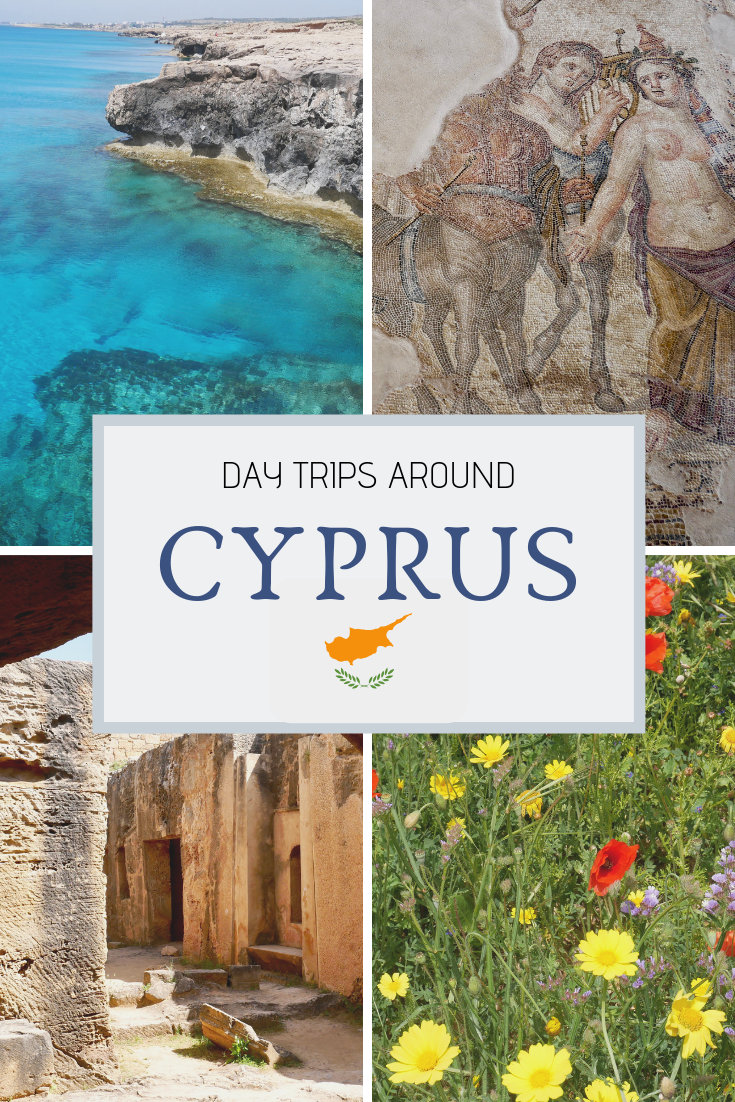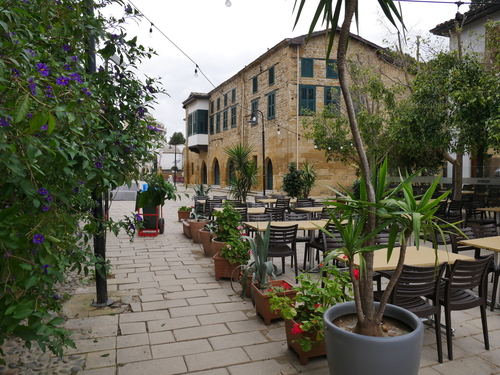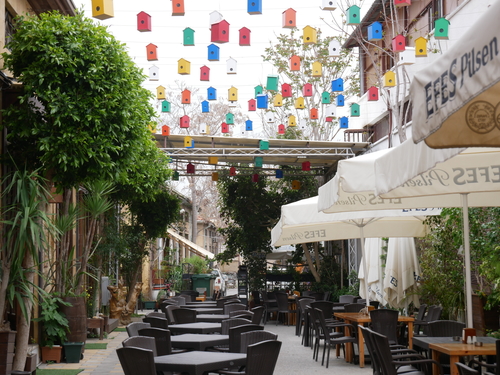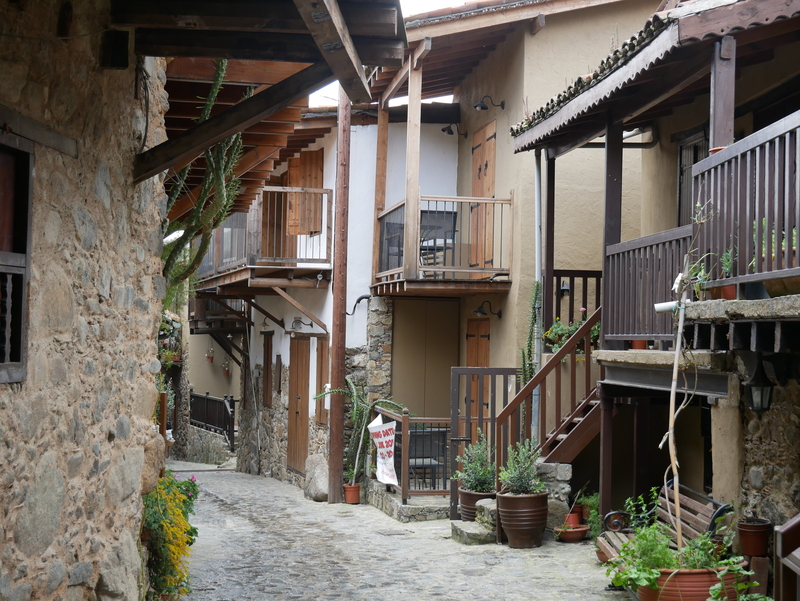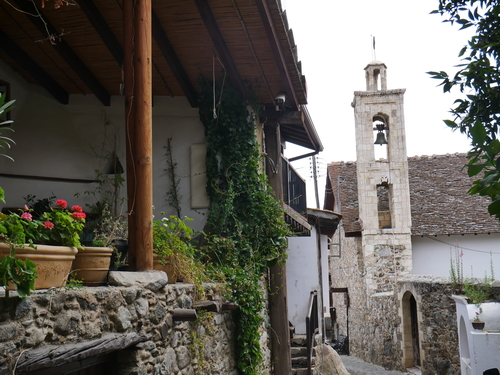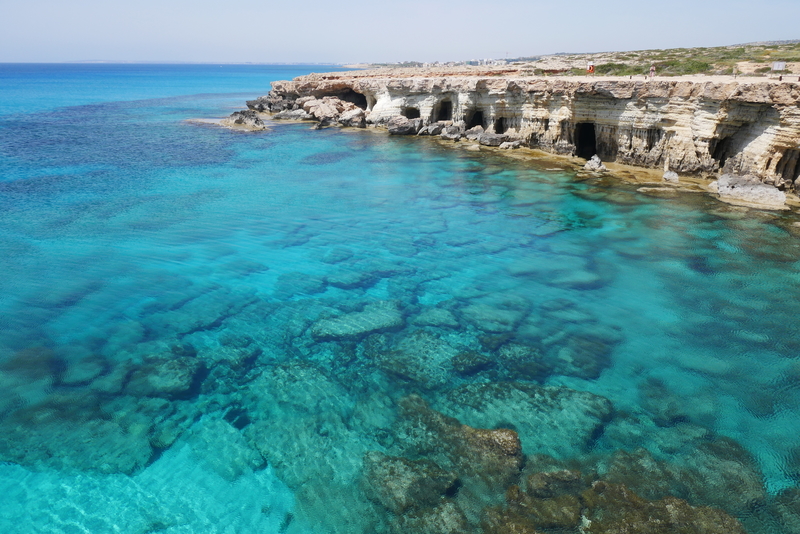
Day Trips from Larnaca without a Car
Cyprus is an island steeped in history and mythology. Known for being the legendary birthplace of the Greek Goddess, Aphrodite, the ‘Island of Love’ is home to sun-kissed shores and a rugged mountainous interior.
Cyprus is a country with natural beauty and cultural richness that is wholly disproportionate to its size. The country’s tumultuous and multilayered past has left ancient riches strewn across this island. Remnants of these archeological relics can still be seen today—littering wildflower-splashed mountainsides and overlooking azure seas.
During my six day Cyprus vacation, I took day trips from Larnaca to the far reaches of the island, packing my itinerary with some of the most beautiful destinations in the Mediterranean. My comprehensive six day Cyprus itinerary included many of the historical, natural and cultural gems that make the island a unique all-in-one destination.
DAY TRIPS AROUND CYPRUS
While I used Larnaca as my home base, I spent the majority of my Cyprus itinerary exploring the country’s archeological sites and national parks. For an island its size, Cyprus has a remarkable number of places to see. The island features everything from verdant mountainous scenery to glistening sandy beaches.
Instead of spending my holiday on Larnaca’s beaches, I chose to use the city as a base and fill my week in Cyprus with five distinct day trips from Larnaca; one to Turkish-influenced North Cyprus and four to the southern half of the island.
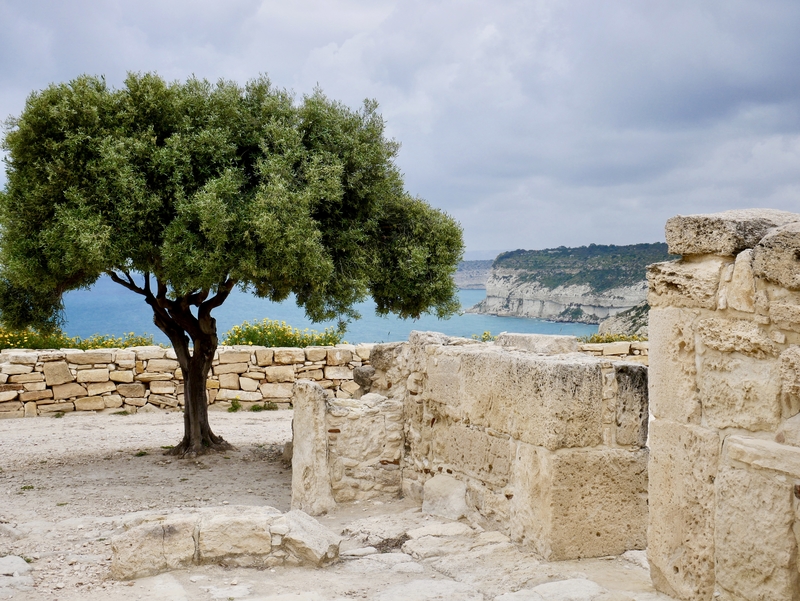
Most tourism in Cyprus centers around beach-lounging and partying. As a result, traveling the island as a budget backpacker can be an unexpected challenge. In Cyprus, public transportation between smaller towns and cities is virtually nonexistent. And while buses connect the island’s largest towns, some of the country’s top attractions can be difficult to visit without a car or organized tour.
Since I was traveling Cyprus without a car, I relied on a combination of public buses and local tours. For day trips to Paphos, Kourion and Cape Greco, I depended on the country’s public transportation network. For day trips to the Troodos Mountains and North Cyprus, however, I joined organized excursions with Eman Travel.
LARNACA
Though I spent five nights in Larnaca, I dedicated little time to the city itself. Instead, I used Larnaca as a base for exploring Cyprus—partly because of its proximity to the island’s largest international airport, and partly because of its central location.
There are surprisingly few accommodation options for those looking to travel Cyprus independently and on the cheap. While in Larnaca, I stayed at the Katka Hostel. Though the hostel was poorly signposted and difficult to find, it proved to be an inexpensive and convenient base from which to explore the island.
Larnaca’s lack of hole-in-the-wall eateries surprised me, too. Most of the restaurants in downtown Larnaca are pricey chains that cater to Americanized palettes. Notable exceptions are the cheap and tasty Souvlaki.gr near St Lazarus Cathedral, and the Cyprus Taverna on Lordou Vyronos Street.
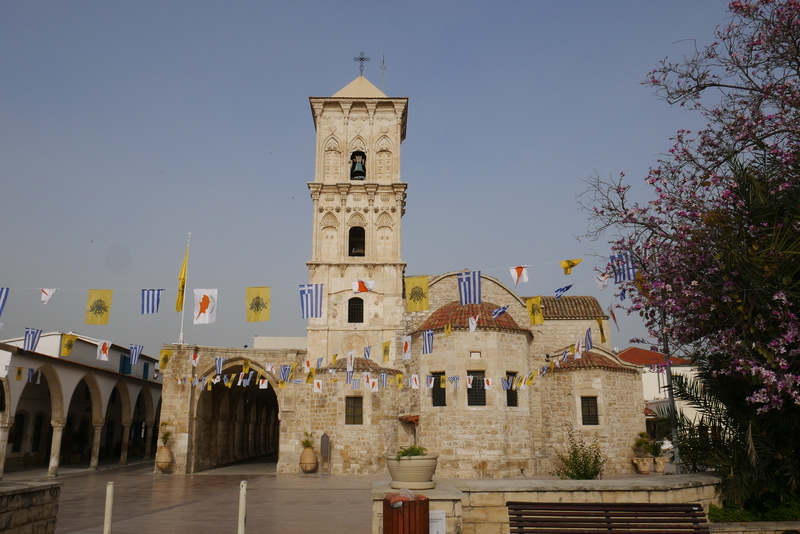
Though Larnaca lacks big-name tourist attractions and must-see sites, the city has a pleasant restaurant-lined waterfront and a handful of interesting places to see—including a small beachside castle, a palm-lined promenade and the beautiful St Lazarus Cathedral.
CAPE GRECO NATIONAL PARK DAY TRIP
Following a fantastic day trip to North Cyprus, I decided to spend the following day on a self-guided day tour to Cape Greco National Park.
The Cape Greco Peninsula is one of the most beautiful places in Cyprus. The park lies near Ayia Napa, in the country’s southeastern corner. The area is somewhat reminiscent to Comino Island, with its cave-punctured cliffs, rugged hillsides and captivating shades of blue.

Multiple buses a day make the journey between Larnaca and Ayia Napa. The buses leave from the Larnaca waterfront and travel along the island’s southern coast to downtown Ayia Napa.
From Ayia Napa, bus 101 travels to the Cape Greco Visitor Center. Ayia Napa is also the gateway to Nissi Beach—one of the most beautiful family-friendly beaches in the Middle East.
Since the Cape Greco Visitor’s Center was closed during my visit, I picked a path and began to wander. The walk along the eastern side of Cape Greco is beautiful. The shadeless path weaves through brush and passes by a blue and white church, a delicate stone arch and numerous sweeping views of the sea. After walking along the eastern side of the peninsula and stopping every few feet to take photos, I followed a sign for the Cape Greco Sea Caves.
When I reached the caves at the water’s edge, the beauty of the water stopped me in my tracks.
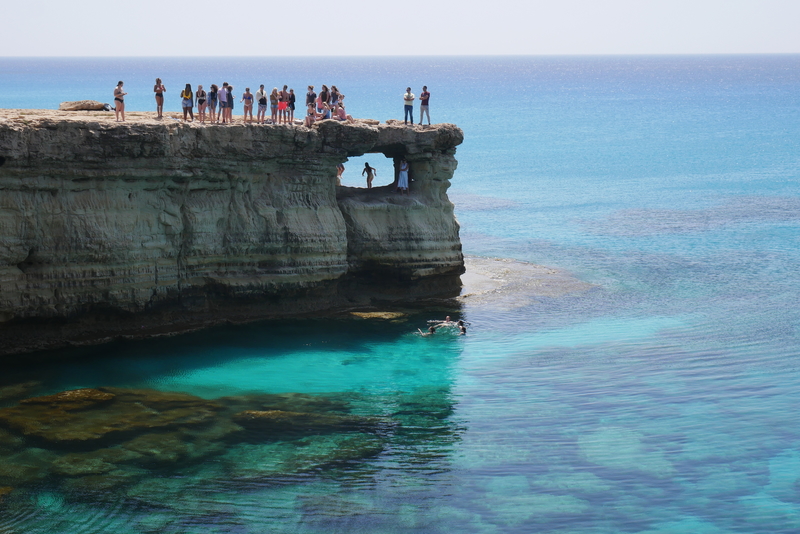
The area around the sea caves is home to some of the most mesmerizing shades of blue I’ve ever seen. Before visiting Cape Greco, I never knew so many shades of blue existed in nature. The water’s colors ranged from indigo to sapphire and from cobalt to turquoise.
I was totally and utterly in awe.
PAPHOS DAY TRIP FROM LARNACA
The following day, I hopped on another bus and headed westward, toward Paphos. I’d read somewhere that Paphos is one of the top places to see in Cyprus. I’d also read that the city is vastly underwhelming and doesn’t live up to its status as the 2017 European Capital of Culture. Since Paphos constitutes a convenient day trip from Larnaca using public transport, I decided to make a trip out west to see for myself.
Paphos is one of Cyprus’ most historically rich cities. Home to two large archeological sites (the Paphos Archeological Park and the Tombs of the Kings) it is a treasure chest for history buffs and lovers of antiquities.
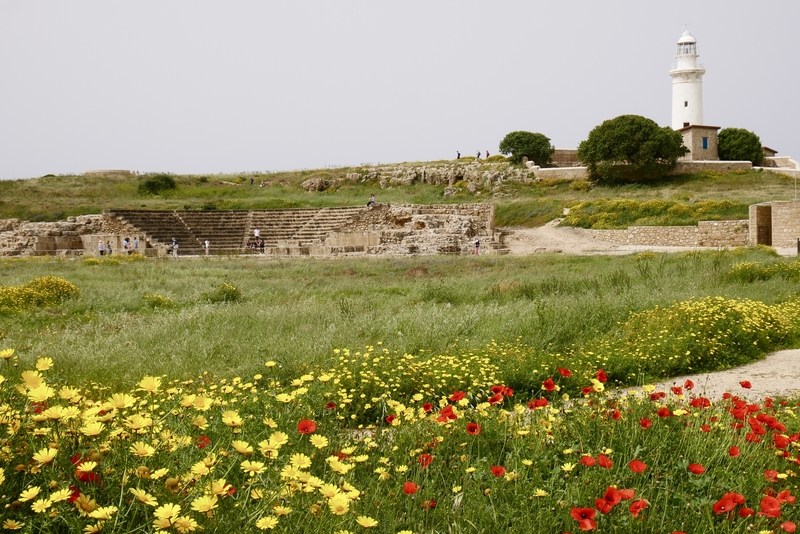
When I arrived in Paphos, I immediately hit the ground running. I strolled along the waterfront and snapped a few photos of the Paphos Fort. Then, I made my way to the Paphos Archeological Park in order to see some of the most beautiful mosaics in the eastern Mediterranean.
-
PAPHOS ARCHAEOLOGICAL PARK
There is something indescribably beautiful about the Paphos ruins. The ancient city sits tucked up against the ocean, its remnants strewn among rippling grasses that are dotted with poppies and yellow daisies.
I meant to spend an hour at the Paphos Archeological Park. On the bus ride, I’d meticulously planned out my day—mapping out the amount of time to spend at the various attractions in order to make it back to the bus stop in time for my return trip to Larnaca.
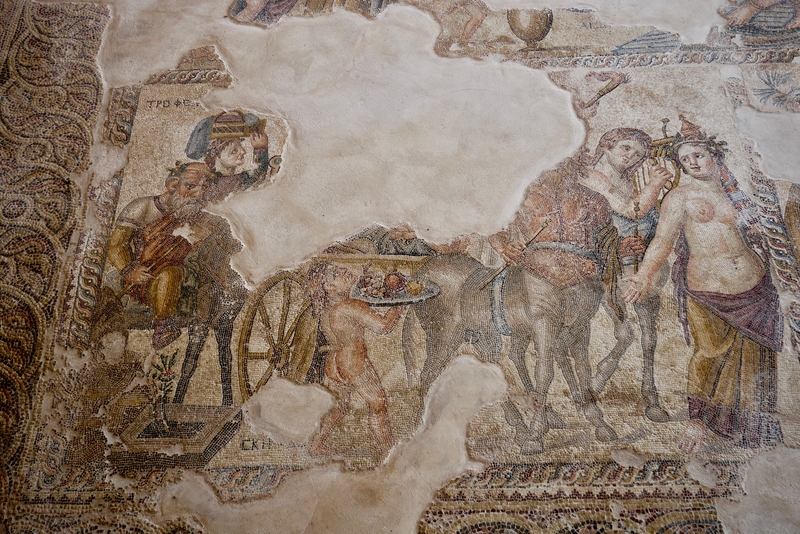
But somehow, while admiring the exquisite mosaic floors of the House of Dionysius, two and a half hours sped by and I found myself rushing toward the exit as fast as my legs could carry me.
-
THE TOMB OF THE KINGS
After visiting the archeological park, I still hoped to make it to the Tombs of the Kings. I walked along the oceanfront promenade as quickly as I could, hoping to somehow shave a few minutes off the maps.me estimate.
I made it to the Tombs of the Kings far later than I had originally planned. And, breathless and gasping for air, I paid the €2,50 entrance fee and began exploring.
The Tombs of the Kings is a UNESCO World Heritage Site that lies 2km north of the Paphos Harbor. The tombs, many of which date back to the 4th century BC, never actually housed any kings. Instead, the rock-hewn chambers are thought to have accommodated Paphos’ aristocrats and high-level officials.
Like the Paphos Archeological Park, the Tombs of the Kings overlooks the cobalt Mediterranean waters. While listening to a soundtrack of crashing waves, I sped around the area’s pathways–climbing up and down stairs, peeking into small chambers and squeezing through passageways.
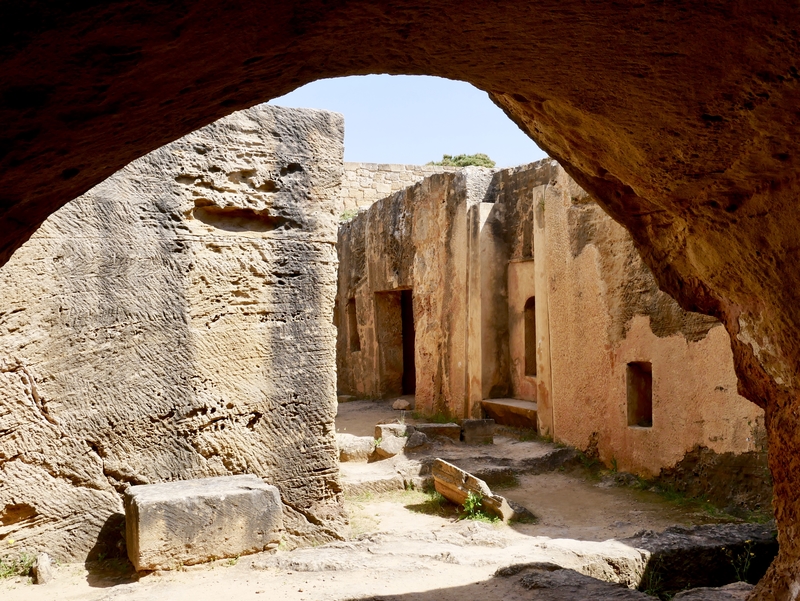
I found the tombs to be impressive, in large part because I wasn’t really sure what to expect.
Had I had more time, I would have loved to spend a few hours meandering about the tombs and soaking in the views of the sea.
Yet since I was traveling to Paphos as a day trip from Larnaca, I had to turn back prematurely to ensure I would have enough time to make the last return bus.
LIMASSOL AND KOURION FROM LARNACA
I had such a wonderful time meandering through the archeological wonders of Paphos, that I decided to spend my next day in Kourion–another of Cyprus’ top historical sites. Kourion sits atop a steep hill that overlooks the ocean. It is a popular day trip from Larnaca, and accessible using public transport.
To travel between Larnaca and Kourion, I had to change buses in Limassol. A direct bus from Larnaca to Limassol leaves every few hours (7 euros roundtrip). From Limassol, bus #16 travels the remainder of the way to Kourion.
-
KOURION
Kourion is a spectacular place to visit. Built in the 2nd century BC, the ancient ruins were once part of an important city state in southwestern Cyprus. The ruins sit perched on a hillside, with sweeping views of the precipitous cliffs.
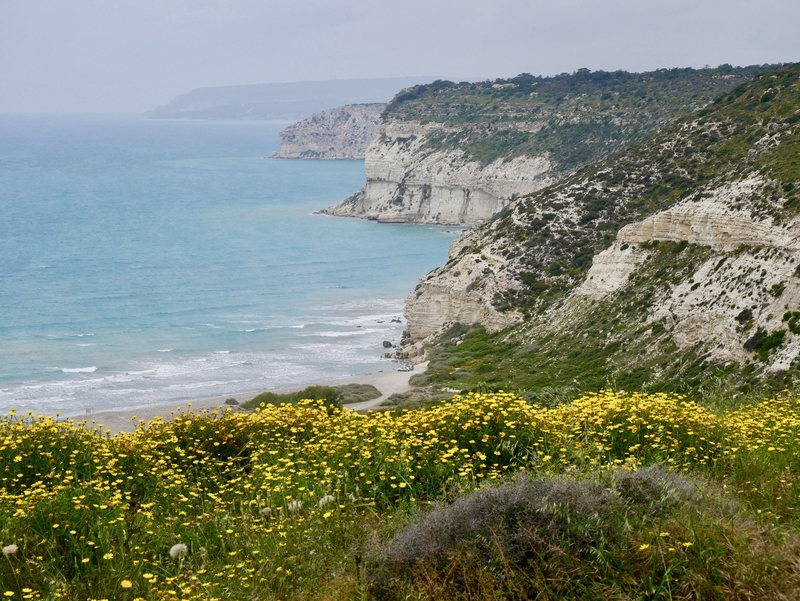
I spent a few hours at the archeological site, admiring the historical relics and the Mediterranean Sea. A walk around the ruins brought me to a well-preserved Greco-Roman amphitheater and various mosaic-laden rooms and chambers. Some, including the House of Achilles and the House of Gladiators, had mosaics that rivaled those in Paphos.
-
LIMASSOL
After soaking in the spectacular views of Kourion, I caught the bus back to Limassol and ate a fabulous traditional Cypriot meal at the Kipriakon Restaurant. Once I filled my stomach with delicious home-style comfort food, I spent the remainder of my day trip strolling along Limassol’s pleasant promenade.
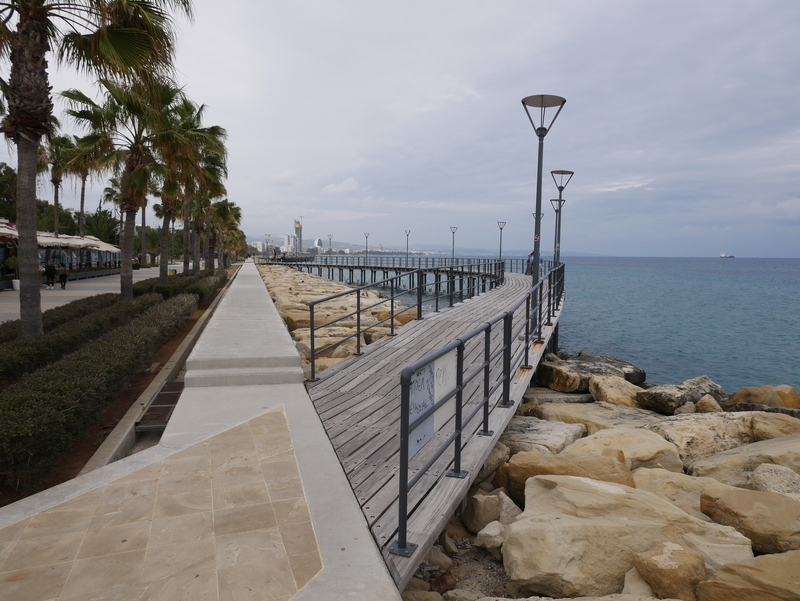
DAY TRIP TO NICOSIA AND THE TROODOS MOUNTAINS
I spent the last day of my Cyprus itinerary exploring the island’s mountainous interior. Since the interior of Cyprus is poorly connected by public transport, I chose to join an organized tour for a whirlwind adventure through Nicosia and the Troodos Mountains.
-
NICOSIA: A DIVIDED CITY
My day tour to the Troodos Mountains included a brief visit to Nicosia. During the visit, I spent about an hour meandering the streets of the old town and peeking into the Turkish-controlled areas of North Cyprus.
In contrast to the day trip I took to the northern towns of Kyrenia and Famagusta, my day trip to Nicosia and the Troodos felt slightly rushed. Both Larnaca and the Troodos would have been better suited for a full day of exploration.
-
KAKOPETRIA VILLAGE, TROODOS MOUNTAINS
From Nicosia, my day tour continued with a pit-stop in Kakopetria Village. The rustic Kakopetria village is amongst the most beautiful in Cyprus. Nestled in the Solea Valley, amid verdant trees and alongside bubbling rivers, the town is an ideal place for a quiet retreat.
After allocating about an hour to Kakopetria, our tour proceed to the village of Troodos, high in the mountains. There, we ate lunch at the Troodos Hotel, before continuing toward Omodos.
-
OMODOS
Omodos is an attractive village near Cyprus’ wine region. Despite a proliferation of souvenir shops and boutique hotels, the village’s backstreets have a timeless cobbled charm. As I wove through the city’s narrow alleyways and peeked into its courtyards overflowing with orange trees, I had the sensation of stepping back in time.
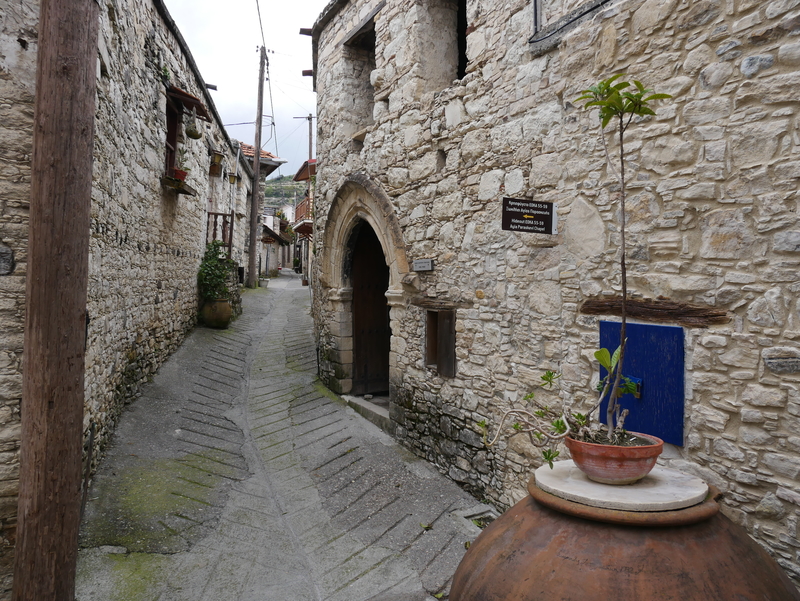
Though touristy, the small village of Omodos is worlds away from the high-rise resort towns and beach clubs that characterize much of southern Cyprus’ coastline.
Surrounded by the vineyard-carpeted slopes of Cyprus’ krashoria, the sleepy town of Omodos is the perfect place to sit back, sip a glass of wine, and soak in the beauty of Aphrodite’s homeland.
****
Cyprus is nicknamed the ‘Isle of Love.’ And there is a lot to love about the enchanting island.
My six day Cyprus itinerary gave me a varied sampling of the island’s offerings. Throughout Cyprus, mountaintop castles and Byzantine churches lay sprinkled about—revealing ancient tombs, intricate mosaics and sites dripping with historical significance. From flower-speckled mountainsides to water so blue it matched the sky, my excursions around Cyprus revealed the country’s beauty, introduced me to its ancient history, and allowed me to understand a bit more about its complicated political present.
____________________
Like this Post on Travel to Cyprus? Pin it!
